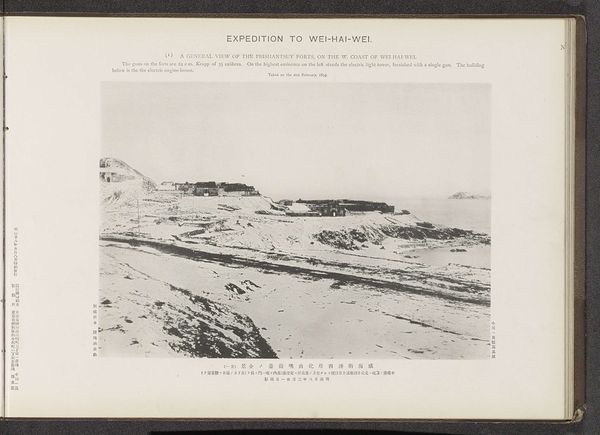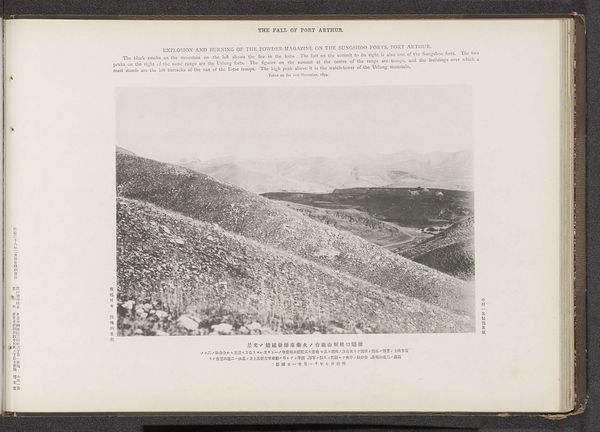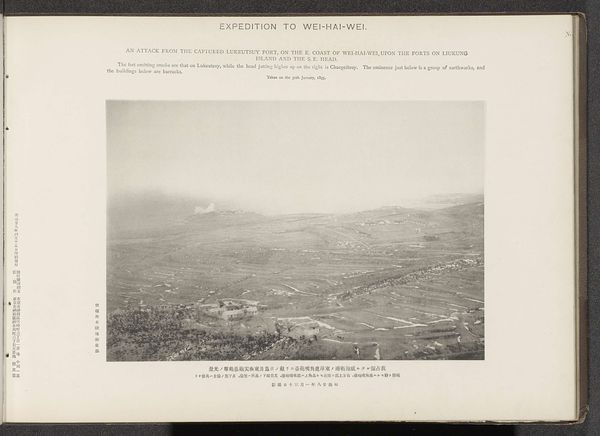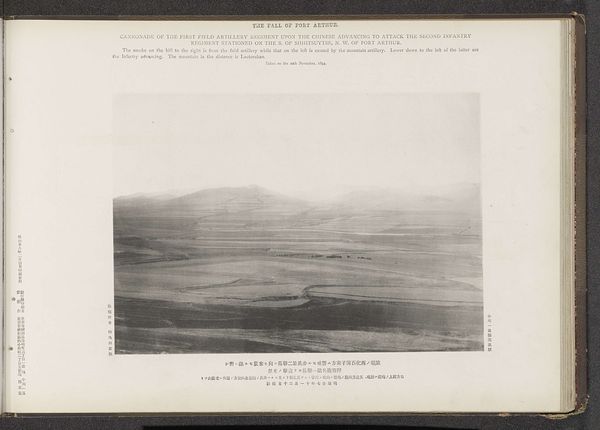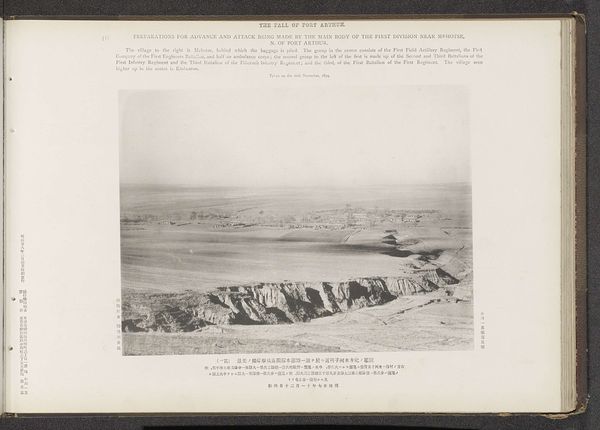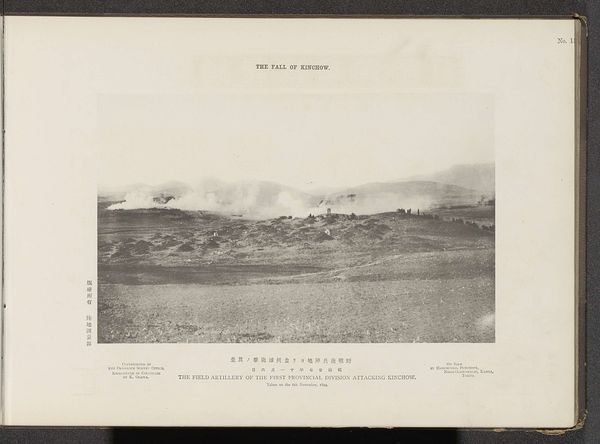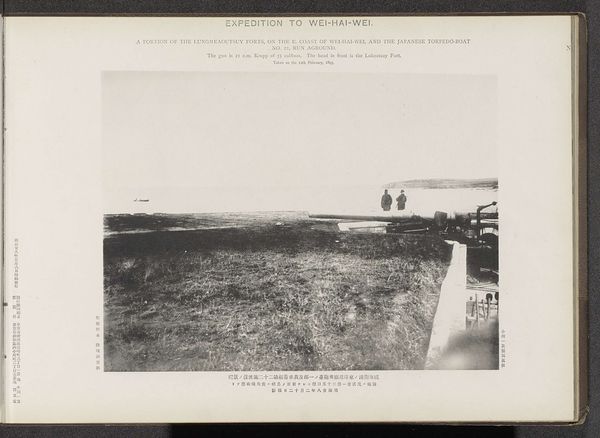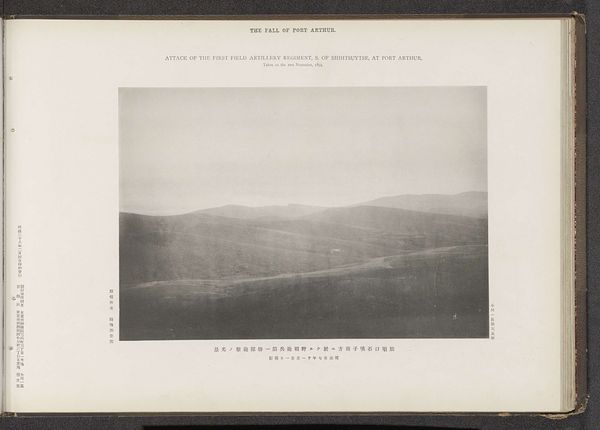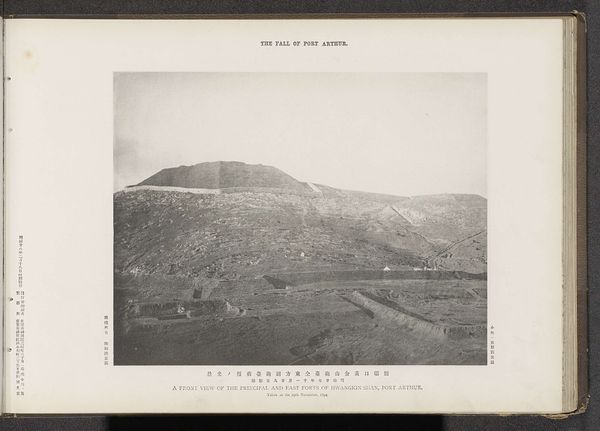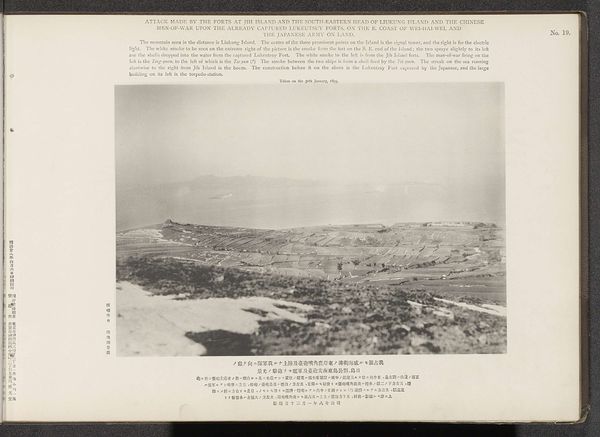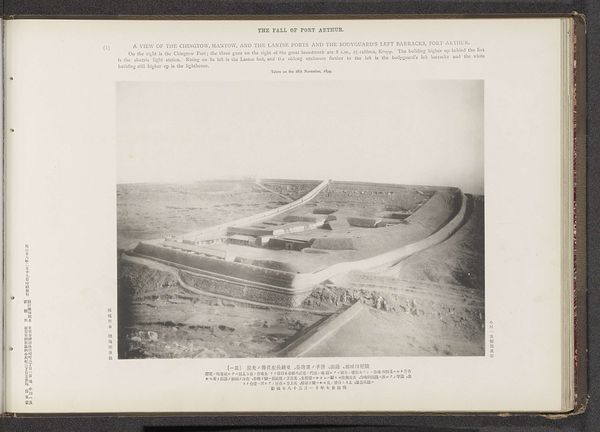
print, photography, albumen-print
#
ink paper printed
# print
#
asian-art
#
landscape
#
photography
#
orientalism
#
history-painting
#
albumen-print
Dimensions: height 206 mm, width 273 mm
Copyright: Rijks Museum: Open Domain
This photograph, titled "A general view of Wei-Hai-Wei, after its capture," was produced by the Ordnance Survey Office. The photographic process itself is key to understanding this image. Photography, unlike painting or sculpture, relies on mechanical reproduction. The camera captures a specific moment, and the resulting print is a direct record of that instant. Here, the stark black and white tones emphasize the documentarian nature of the image, offering a matter-of-fact view of the captured territory. The very act of surveying and documenting Wei-Hai-Wei speaks volumes about power dynamics and the mechanization of observation. The Ordnance Survey Office, an institution dedicated to mapping and recording territory, uses the then relatively new technology to assert control and ownership. In appreciating this photograph, it’s important to look beyond the image itself. It is a product of both skilled labor and machine precision, intertwined with the politics of territorial conquest. This compels us to consider the broader context of its creation and how it reflects the social and political landscape of the time.
Comments
No comments
Be the first to comment and join the conversation on the ultimate creative platform.
